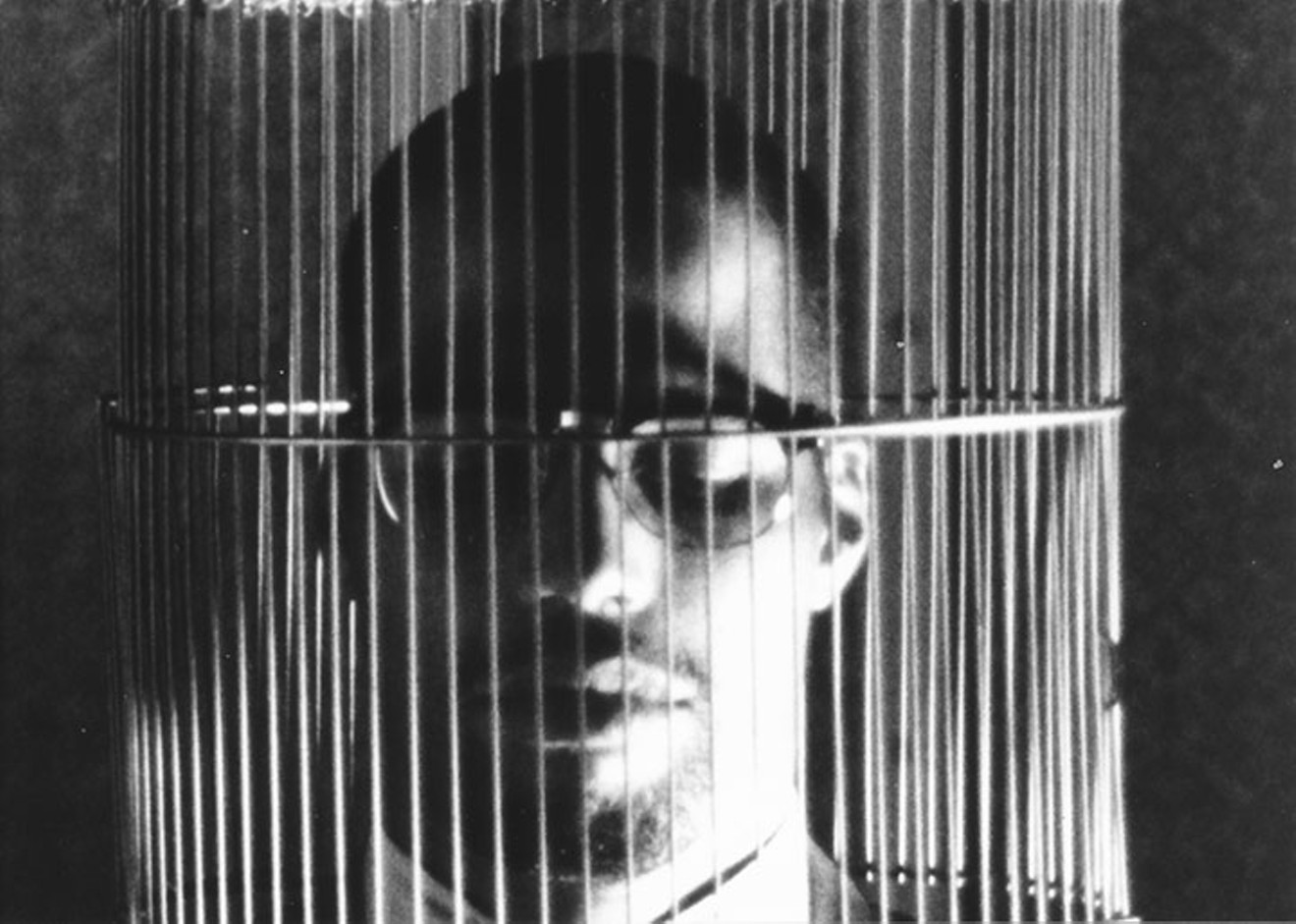It's always a bit troubling when a theme of the past becomes fashionable again, decades after its inception, in a way that's completely unrelated to nostalgia. In 2004, it was the crimped hair and fishnets of the '80s, the same way that chokers and flannel from the '90s are cute now. The reasons behind these recurring trends are unclear; they just seem to pop up, like an unavoidable cycle of resurfacing imagery that only some can recognize as vaguely familiar.
It's just a function of culture. Maybe we subconsciously gravitate toward what feels safe and natural. In an age that is hurtling toward the future, we're rarely confronted with history because, for the most part, we avoid it.
John Akomfrah's exhibition at Pérez Art Museum Miami, "Tropikos," is all about history. Specifically, it addresses the history of imperialism that informs both commerce and the lives of those connected to the African diaspora. In some of Akomfrah's languid tableaux, white Europeans in period garb lie amid spices and fabrics pillaged from far-away lands. Though the period is different, the theme doesn't stray from Akomfrah's earliest work with the Black Audio Film Collective, a group of seven artists who created films centered on black identity in Britain during the '80s and '90s.
After Diana Nawi curated "Tropikos," assistant curator Jennifer Inacio was tapped to organize a film series from the Black Audio Film Collective (BAFC) to accompany Akomfrah's work and put the public in conversation with the narratives prevalent in their films.
"We thought this would be a great opportunity to bring BAFC to Miami," Inacio explains. "I really wanted to focus on different periods of their group. It was a very deep and political conversation that they were having."
Founded in 1982, BAFC created work during England's Handsworth riots in 1985 and was even commissioned by a news organization at the time to make a short film in response to the social unrest. Early films made by the collective are inundated with archival footage. Signs of Empire, the group's first effort, pairs images of British colonialism with the speeches of xenophobic politicians and musical compositions of ambiguous, anxiety-inducing audio. Handsworth Songs, the first film shown in PAMM's series, is a video essay of historical footage, interviews, and scenes from the riots meant to contextualize and explain the racial tensions that caused thousands of black, South Asian, and other British immigrants to take to the streets. Though the film was addressing then-contemporary concerns, it resonates today in that queasily recognizable way that history sometimes does.
"This fear of the other that was happening at that time, it's so relevant to today," Inacio says. "It's happening now with Brexit and the travel ban. That was one of the main motives of having this series here."
Of course, even history can feel distant and nonthreatening, especially when lumped in with hindsight and notions of "simpler times." How radical is a documentary about Malcolm X when you can buy his iconic browline glasses on Amazon? But the surrealist imagery that began to make its way into later BACF films, such as Mysteries of July and Seven Songs for Malcolm X, gives the films a modern feel. And PAMM's curation, both in film selection and guest speakers, tries to bring the films out of the past and into the present.
"I decided to choose [Seven Songs for Malcolm X] mainly to come back to the U.S.," Inacio says. " It was a nice bridge to bring the conversation back to us."
As if in response to a future audience, the last films in BACF's catalog and PAMM's series explore Afrofuturism with imagined dystopias and space colonies. Memory Room 451 is a time traveler's documentary exploring the lives of those in the distant past, what was then the filmmakers' present. Suddenly, we are the archive, and the scrutiny that is flippantly applied to history is complicated by the complexity of modernity. That makes it more difficult to dismiss history as simply a source of rehashed commodities or embarrassment.
In an interview with Tate, Akomfrah explains the function of the archive not only as the recognition of what's gone, but also of preservation. He says, "The image is one of the ways in which immortality is enshrined in our psyche and in our mind and documentaries do that. You make a documentary because you want to both capture something that’s going to die unless it’s captured, but you’re also trying to capture something because you want it to live."
These films, in the words of Akomfrah, strive to legitimize black identity in a culture that refused to represent it — they seep into the present almost too easily. Here, it's not difficult to see that we've forgotten our history or that we're creating a future in which we'll continue to do so. And in an era that feels like history repeating itself, there's nothing that feels more vital than keeping that history alive.
Seven Songs for Malcolm X. 7 p.m. Thursday, July 27, at Pérez Art Museum Miami, 1103 Biscayne Blvd., Miami; 305-375-3000; pamm.org. Free with museum admission.
The Last Angel of History and Memory Room 451. 7 p.m. Thursday, August 10, at Pérez Art Museum Miami, 1103 Biscayne Blvd., Miami; 305-375-3000; pamm.org. Free with museum admission.
[
{
"name": "Air - MediumRectangle - Inline Content - Mobile Display Size",
"component": "19274298",
"insertPoint": "2",
"requiredCountToDisplay": "2"
},{
"name": "Editor Picks",
"component": "17482312",
"insertPoint": "4",
"requiredCountToDisplay": "1"
},{
"name": "Inline Links",
"component": "18711090",
"insertPoint": "8th",
"startingPoint": 8,
"requiredCountToDisplay": "7",
"maxInsertions": 25
},{
"name": "Air - MediumRectangle - Combo - Inline Content",
"component": "17482310",
"insertPoint": "8th",
"startingPoint": 8,
"requiredCountToDisplay": "7",
"maxInsertions": 25
},{
"name": "Inline Links",
"component": "18711090",
"insertPoint": "8th",
"startingPoint": 12,
"requiredCountToDisplay": "11",
"maxInsertions": 25
},{
"name": "Air - Leaderboard Tower - Combo - Inline Content",
"component": "17482313",
"insertPoint": "8th",
"startingPoint": 12,
"requiredCountToDisplay": "11",
"maxInsertions": 25
}
]













